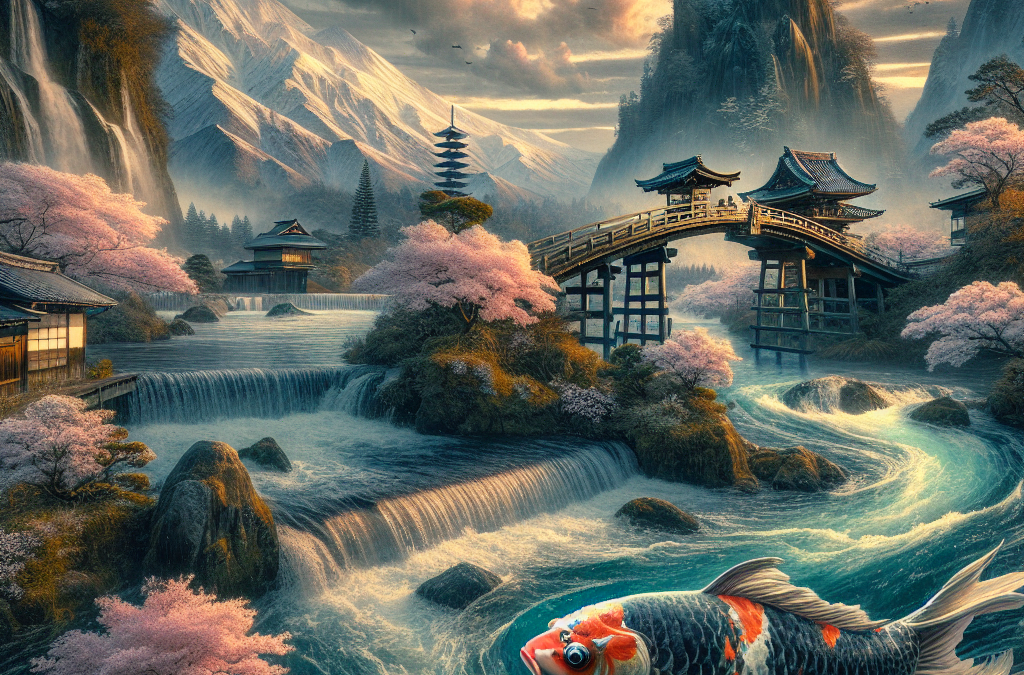In the tranquil waters of Japan, there swims a creature that has captivated hearts and minds for centuries—the Koi fish. Beyond its graceful movements and vibrant colors lies a rich tapestry of legend and symbolism that has woven its way into the cultural fabric of Japan and beyond. Join me as we delve into the depths of the legend of the Koi fish, a tale that spans centuries and continues to inspire awe and admiration to this day.
The legend of the Koi fish finds its roots in ancient Chinese mythology, where it is said that a group of courageous Koi fish swam upstream against the powerful currents of the Yellow River, eventually reaching a waterfall known as the Dragon Gate. Despite the daunting obstacle, the Koi persevered, and those who successfully leaped over the Dragon Gate were transformed into powerful dragons—a symbol of strength, perseverance, and transformation.
From this ancient myth emerged the symbolism that surrounds the Koi fish to this day. In Japanese culture, the Koi is revered as a symbol of perseverance, determination, and courage in the face of adversity. Its ability to swim upstream against strong currents is seen as a metaphor for overcoming obstacles and achieving success despite the odds.
Moreover, the vibrant colors and distinctive patterns of the Koi hold deeper meanings. In Japanese folklore, each color is associated with different qualities: the red Koi symbolizes love and passion, the white Koi represents purity and innocence, the black Koi embodies overcoming adversity, and the gold Koi is a symbol of prosperity and wealth. Together, these colors come together to represent the journey of life, with its ups and downs, challenges, and triumphs.
Throughout Japanese history, the Koi fish has been celebrated in art, literature, and traditional ceremonies. Koi ponds are a common feature in Japanese gardens, where the fish are admired for their beauty and grace. In addition, Koi are often depicted in paintings, woodblock prints, and even tattoos, serving as a reminder of the values they represent.
One of the most famous manifestations of the Koi legend is the annual Children’s Day festival in Japan, where families fly colorful carp-shaped windsocks called “koinobori” in honor of their children. These windsocks, which represent the various family members, are flown high in the sky, symbolizing the parents’ hopes and dreams for their children’s success and happiness.
In today’s world, the legend of the Koi fish continues to resonate with people from all walks of life. Its message of resilience and determination holds particular significance in times of hardship and uncertainty. Whether facing personal challenges or navigating global crises, the story of the Koi serves as a source of inspiration and strength, reminding us that no obstacle is insurmountable with perseverance and courage.
The legend of the Koi fish is more than just a story—it is a timeless symbol of hope, perseverance, and transformation. From its ancient origins in Chinese mythology to its enduring presence in Japanese culture, the Koi continues to inspire awe and admiration across the world. As we reflect on its significance, may we draw upon the lessons of the Koi in our own lives, facing challenges with resilience and embracing the journey of transformation with open hearts and minds.

